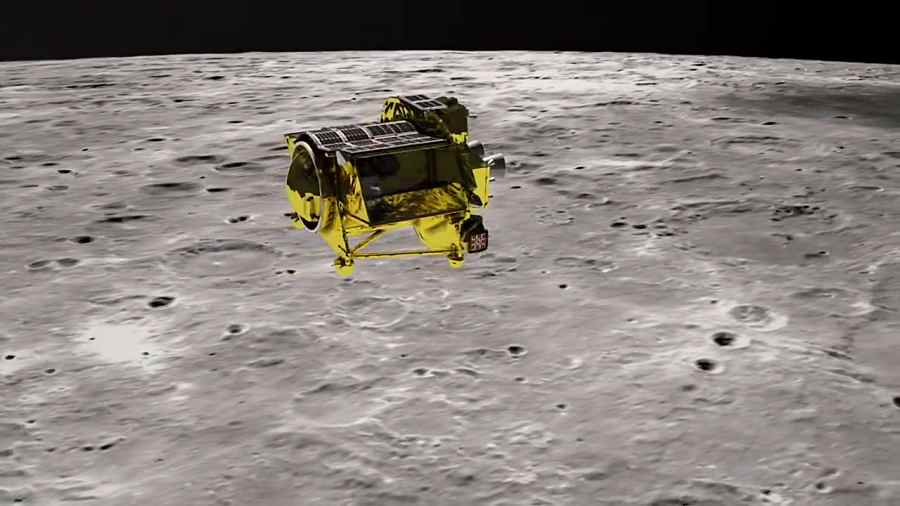Fri 19 January 2024:
The Japan Aerospace Exploration Agency (JAXA) hopes for a precise landing of its Smart Lander call “Moon Sniper” for Investigating Moon (SLIM) probe within 100 metres (328 feet) of the designated target, a technology it describes as unprecedented and critical for advancing lunar exploration, particularly the search for lunar water and the possibility of human habitation.
Nicknamed the Moon Sniper, SLIM will start a 20-minute touchdown phase on its one-way mission from midnight on Saturday (15:00 GMT Friday), trying to land on a target site roughly the size of two athletic tracks on the slope of a crater just south of the lunar equator.
“No other nation has achieved this. Proving Japan has this technology would bring us a huge advantage in upcoming international missions like Artemis,” said Shinichiro Sakai, JAXA’s SLIM project manager, referring to US space agency NASA’s crewed moon mission.
On board Japan’s Moon Sniper spacecraft is a little robot with a big mission: to pop open like a Transformer toy, wiggle across the lunar surface and beam images back to Earth.
The shape-shifting SORA-Q probe – codeveloped by a major toy company – has been compared with a friendly Star Wars droid and a sea turtle because of the way its metal form can navigate the dusty moonscape.
Sora means “universe” in Japanese, while “Q” refers to the words “question” and “quest”, its makers say.
Slightly bigger than a tennis ball and weighing as much as a large potato – eight centimetres (three inches) across and 250 grams (half a pound) – SORA-Q was designed by JAXA with Takara Tomy, the toy company behind the original 1984 Transformers.
If the mission succeeds, the probe’s cameras will take valuable images of a crater where parts of the moon’s mantle, usually hidden deep below its crust, are believed to be exposed.
Only four nations have successfully landed on the moon – India, China, the US and Russia.
JAXA has emphasised that its high-precision technology will become a powerful tool in future exploration of hilly moon poles, seen as a potential source of oxygen, fuel and water. Japan also plans a joint unmanned lunar polar exploration with India in 2025.
The Japanese agency has twice landed on small asteroids, but a moon landing is much more difficult due to its gravity, as seen in a number of recent failures.
JAXA says it will take up to a month to verify whether SLIM has achieved its high-precision goals after touchdown.
SOURCE: INDEPENDENT PRESS AND NEWS AGENCIES
______________________________________________________________
FOLLOW INDEPENDENT PRESS:
WhatsApp CHANNEL
https://whatsapp.com/channel/0029VaAtNxX8fewmiFmN7N22
![]()
TWITTER (CLICK HERE)
https://twitter.com/IpIndependent
FACEBOOK (CLICK HERE)
https://web.facebook.com/ipindependent
Think your friends would be interested? Share this story!





